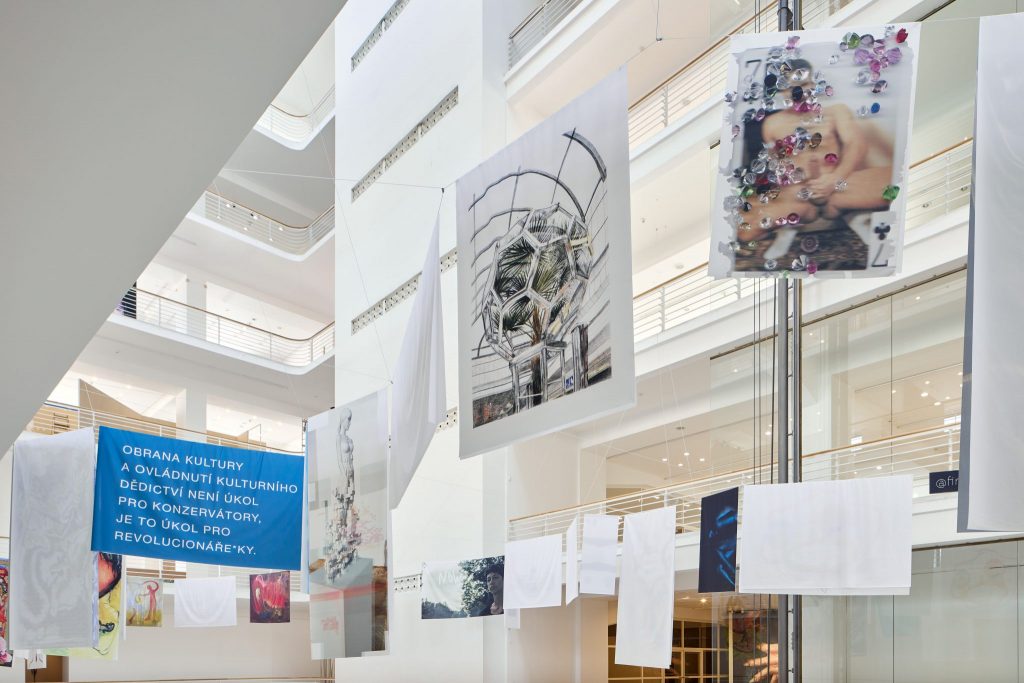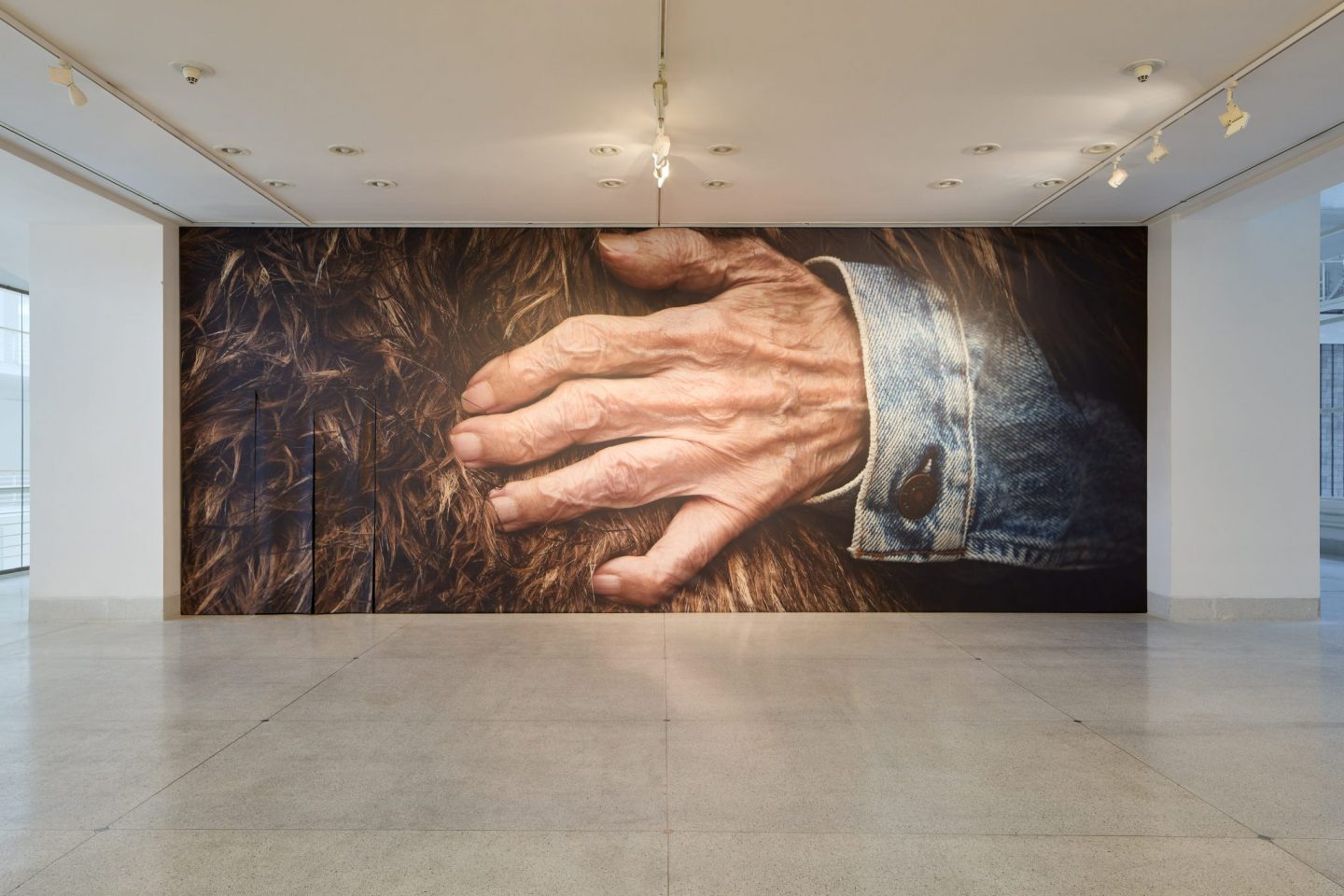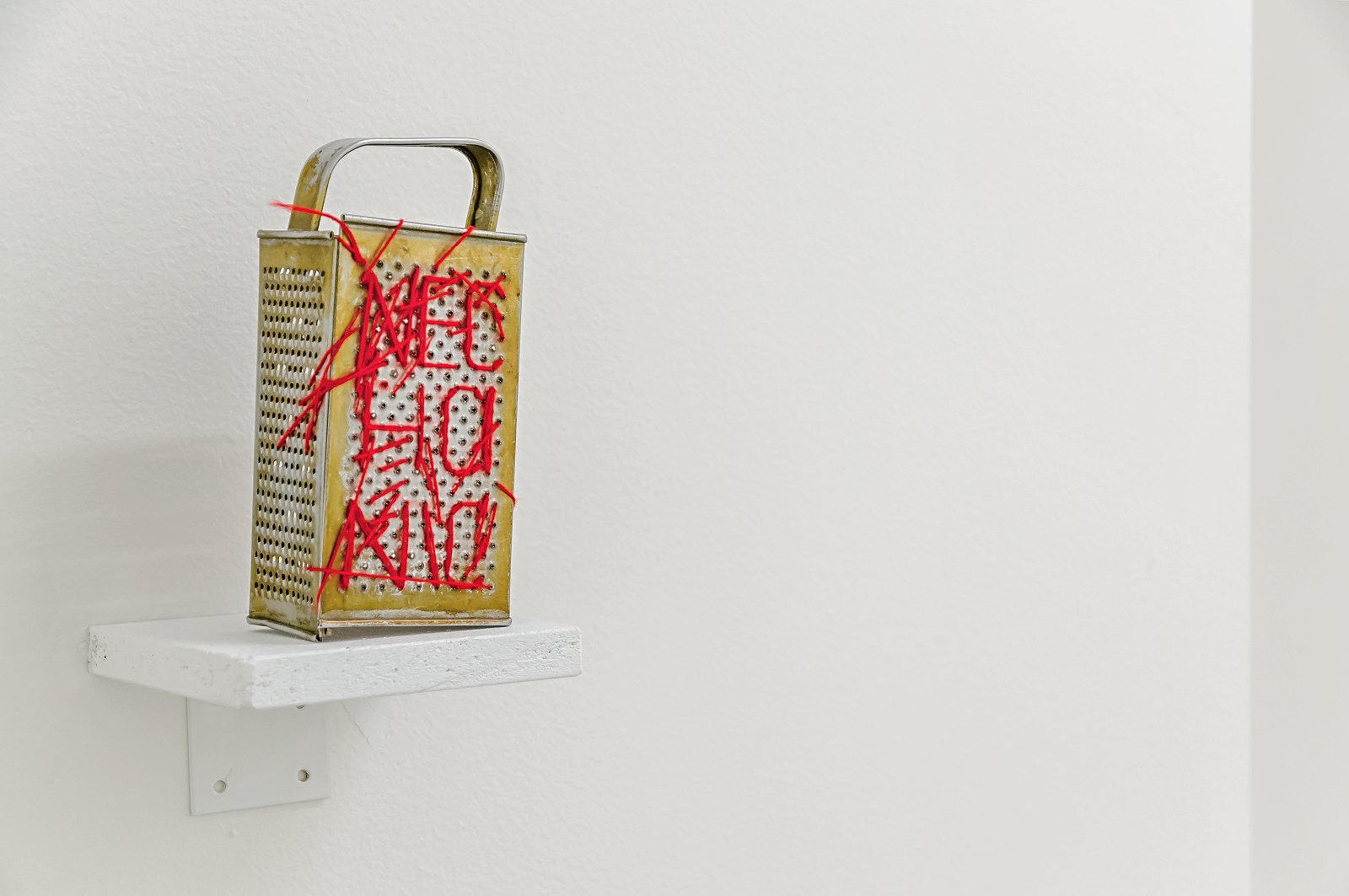This year’s Jindřich Chalupecký Award exhibition at Prague’s National Gallery has attracted controversy. The exhibition, which brings together the works of four nominated artists based in Czechia, Ezra Šimek, Vojtěch Radakulan, Olga Krykun, Martina Drozd Smutná, David Přílučík, along with Korakrit Arunanondchai as an international laureate, takes its place among a number of high profile 2022 art events that have generated diverse furores. Happily, the Jindrich Chalupecky prize hasn’t resulted in the kind of all encompassing meltdowns as that which attended this year’s documenta, nevertheless, the show’s curators were prompted to issue a seven page ‘lessons learned’ document outlining their successes and failings in making this year’s exhibition. This rather excruciating document is more than a curatorial struggle session; it offers genuine insight into the exhibition itself. The curators, who style themselves in the document as ‘moderators’ write: ‘the strategy we chose was based around materialising an exhibition that would be a sort of rave’. If readers need a moment to physically de-cringe themselves please feel free. The idea of exhibition as rave has certain attractions, but perhaps the foremost question in such a context is whether the sense of freedom and communal endeavour shines through. There are certainly moments of brightness and insight in the JCHA exhibition, but as the curatorial statement suggests, transcendence can be a very challenging goal.
Entering the exhibition the visitor is greeted by a large scale photograph from Arunanondchai’s work, an aged hand extends into a landscape of brown fur. It is an affecting and emotional opening to an exhibition that examines the ways in which identities blur and the human subject faces the ultimate and the uncanny. Arunanondchai’s photographs are accompanied by a deft and expansive video work following the final years of an older relative, and the existential questions that have attended political upheavals throughout recent Asian history, including the death of King Bhumibol Adulyadej in Thailand – and the subsequently suppressed democracy protests of 2020, and the largely memory-holed Jeju Island massacre in South Korea. With the video Arunanondchai skilfully interlaces the personal, the supernatural, and the geopolitical with a keen eye for the absurdities inscribed in protesting for fundamental rights in the meme age. It’s far a chill-out room at a warehouse party, but it definitely sets a cosmic tone for the events to come.
Next up in the space is the work of Ezra Šimek. Šimek presents three videos interspersed throughout the exhibition space. The works examine the contemporary trans experience and the construction of notions of other social identities, particularly the frontier identities forged in the conquest of the Western United States.Šimek as protagonist croons an auto-tuned country melody in one video, moseys through the monuments of Prague to an Ennio Morricone soundtrack in another, and in the third examines the unsettled identities that settled the historical Western US. It is a timely work, both in terms of the urgent issue of the recognition and acceptance of the fact of trans life, and in terms of its aesthetic: cowpoke chic seems to be everywhere these days. Šimek is a likeable guide, but the layout of the show created more disruptions to their narrative than was ideal. As the rave begins, the last thing you need are interruptions on your way up.
Vojtěch Radakulan is next on the decks. Radakulan’s interactive sculptures involve oculus-enabled video games designed for a minimum of three players. As with Simek’s works Radakulan’s visual acumen speaks very much to the moment; gaming as an emerging incubator of aesthetics will only increase as Web3 tech advances. Nevertheless, without anyone to play with the works fall rather flat. Dancing alone is still dancing, but maybe that’s the point. In neoliberalism, Billy Idol isn’t the only one celebrating/mourning dancing with himself.

Martina Drozd Smutná’s paintings are possessed of a distinct individualism, the artist’s unique style – oneiric, richly narrative – gestures towards illustration, but the canvases always remain visually unsettled. The display of Smutná’s works, many strung from the ceiling, creating a kind of maze for viewers, did little to serve the images, drawing more attention to the display methodology than to the works themselves. As every raver knows, if your DJ is good enough, you don’t need a lot of flashing lights to get the crowd behind you.
Olga Krykun presented a diversity of works: drones dressed as butterflies, traditionally-dressed dolls slumped against the gallery walls amid a welter of suitcases. Inevitably the imagery of several recent IRL refugee emergencies lends the works an immediate potency, but the contrast of somewhat kookily accoutred drones and haunted human forms felt at odds with each other especially as Radakulan’s video game consoles and Šimek’s videos played around them. It’s hard to do buzz and buzzkill in the same mix.
David Přílučík’s film ‘Breed’ is an…intense way to close the Jindřich Chalupecký Memorial Rave. His video purports to follow the story of a dog breeder put in charge of a unique species of cross-bred wolf that eventually comes to exert an unnatural thrall over him. A warning text outside the display of ‘Breed’ is worthy of some kind of award in itself: ‘the film contains footage from a veterinary examination […] and footage evoking an intimate relationship between a man and a dog’. Beware: flashing lights. The intimate relationship, I can assure readers, extends considerably beyond that of Scooby-Doo and Shaggy. Ultimately, Přílučík’s film is really more narrative film than art film, but its confrontational satire of the mindset of blood-and-soil nationalism is apposite to the present brutal moment in European history.
So, exhibition as rave, does it hold up? Not really, in the end some works don’t seem to dance to quite the same tempos as others and the cumulative result is less than the ecstatic communion of a club at sunrise than of a rather awkward night of speed-dating.



